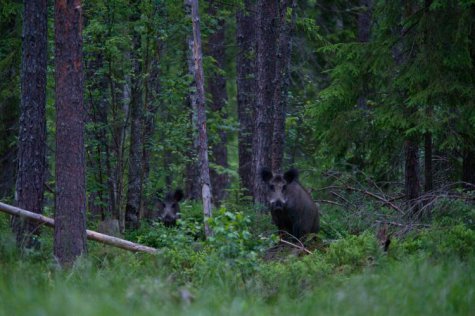Human activities and balance in nature
Text Vahur Sepp, forester
Photo Tarmo Sammal
Translation Liis
Image sent to the Animal of the Year photo contest
The number of wild boar in Estonia depends primarily on conditions in winter and extra food supplement. The number of wolves is so low that they pose no particular threat to the boars. The boar hunts of bears may succeed in the period when the newborn piglets are still in the nest. Lynxes generally keep away from boars. They may be interested in a piglet left on its own by the sow. So the number of wild boar in Estonia is mainly governed by the hunters.
The main task of hunting is to maintain a balance between herbivores, carnivores and human society. It happens that hunters do not manage quite well as keepers of the balance in the ecosystem. Thanks for instance to the abundance of small predators (raccoon dogs) mange flourishes in our forests, and the numbers of aquatic and bogland birds and of hares is at a low. I know at least one hunting association where hunting small game with dogs is prohibited because it might disturb the boars. Also, feeding wild boars means feeding raccoon dogs as well.
A hunter looks firstly for emotions from the hunt. Emotions today are also a saleable commodity. Hunting tourism is steadiletc.
As a summary of the above I would say that natural balance is disturbed largely due to human activities. Nature has a habit of regulating itself. In case of small predators rabies operated successfully. When man removed it, mange came up insteada. The lethal pest of boars, the African swine fever, is evidently here to rectify mistakes caused in nature by humans.









